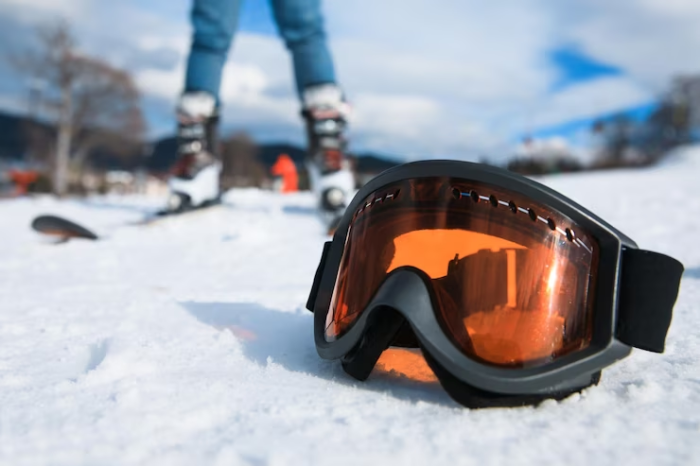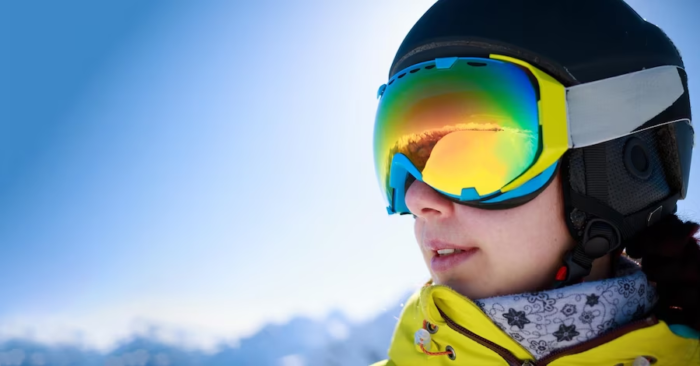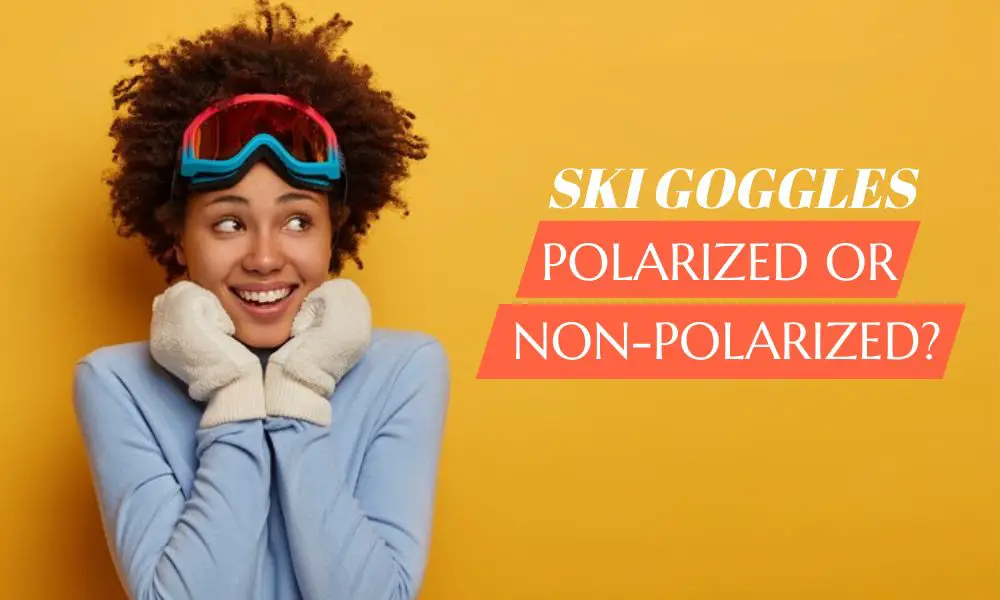This is a query of most of the people who are interested in skiing. And it is your query too.
But I am here so you won’t have to look for answers anywhere else! Just sit back and relax while reading this article.
Do Ski Goggles Have Polarization Properties?
Yes, ski goggles are polarized. Polarized ski goggles feature lenses that have a special filter that helps reduce glare from reflective surfaces, such as snow, ice, and water. The polarization technology enhances visibility making them popular choices for skiing.
Polarization in ski goggles works to reduce glare, increase contrast, increase depth perception, and reduce strain in the eye. Let us study these features in detail:
Glare Reduction
Do you ever feel a bright light striking your lenses while skiing? Ever wondered what that could be? When light reflects off the snow, it directly reaches your eyes which creates intense glare that can be uncomfortable for skiers. Polarized lenses have a vertical filter that blocks this reflected light, effectively reducing glare and improving visibility.
Enhanced Contrast
By filtering out the horizontal light waves, polarized lenses can enhance contrast and make objects and terrain details more distinct. This is particularly beneficial when skiing in bright conditions or areas with a lot of sunlight and glare. Sometimes bright terrains can make the scenery look very dull from the inside of the goggles, wearing polarized goggles will clarify the scenery to you.
Reduced Eye Fatigue
The reduction in glare not only improves visibility but also reduces eye strain and fatigue. By minimizing the need to squint or strain your eyes against bright reflections, polarized ski goggles can help you stay more comfortable and focused on the slopes for longer periods.
Improved Depth Perception
Don’t you find it annoying, not being able to see all the breathtaking scenery right from the goggles that will save you the effort of taking them off? Polarized lenses will help you with that. It enhances depth perception by providing clearer and more detailed views of the terrain. This can be especially important when skiing on uneven slopes or in areas with variable snow conditions.
However, it’s essential to note that polarized lenses may not be suitable for all skiing conditions.
What Conditions Are Suitable For Polarized Goggles?

There are certain weather conditions where polarized lenses prove to be ineffective. They are of excellence in sunny or high-glare situations, but they are not ideal for low light when visibility is already limited. Flat light can be challenging for skiers, as it diminishes shadows and depth perception, and polarized lenses may increase this issue.
As such, many skiers and snowboarders prefer to have multiple pairs of goggles with different lenses, including polarized and non-polarized options. This allows them to adapt to changing light conditions and ensures they have the best visibility for the specific weather they encounter on the slopes.
There are conditions where polarized lenses are unbeatable and in those conditions, you should be having a polarized goggle only!
Sunny Days
As mentioned above, bright conditions are fonder of polarized lenses. Polarized goggles are most effective on bright, sunny days when the sun’s rays reflect off the snow, creating intense glare. The vertical polarization filter in the lenses blocks the horizontally-polarized light, reducing glare and providing clearer vision.
High-Glare Environments
Polarized goggles excel in environments with high levels of glare, such as snowy mountain slopes, frozen lakes, and icy terrain. The goggles help skiers and snowboarders see more clearly by filtering their way through the intense reflections and improving contrast. Do you see why polarized goggles promise glare reduction? Because they are made for environments with a high level of glare!
Is Polarized Better Than Non-Polarized Ski Goggles?

As I told you, it always depends on certain conditions whether a particular thing is good for you or not. There are advantages and disadvantages revolving around both types, it is up to you to decide if it affects you or not.
Polarized Ski Goggles Advantages:
Polarized goggles are exceptionally effective in reducing glare from reflective surfaces like snow, ice, and water. They enhance contrast and clarity, making objects and terrain details more visible, especially on bright, sunny days.
Non-Polarized Ski Goggles Advantages:
Non-polarized goggles are more versatile across various lighting conditions. They do not reduce glare to the same extent as polarized goggles, but they maintain good visibility in low light, such as overcast days or early mornings & late evenings.
Choosing the Right Goggles
If you are a morning person and like to ski in bright, sunny conditions that bring along with it lots of glare, polarized goggles are the right choice for you.
On the other hand, if you are a night owl and prefer skiing in low-light situations, non-polarized goggles might be a better choice. Because wearing polarized goggles in already dull lighting will make it duller and contrast less. You will want as much normalcy as possible when you are skiing in flat light with added clear vision which is already being provided by the non-polarized lenses.
Many skiers opt to have both polarized and non-polarized goggles in their gear collection. This way, they can switch between the two depending on the weather conditions and achieve the best visibility and comfort throughout their ski sessions.
Conclusion
Ultimately, whether you choose polarized ski goggles or not depends on your skiing preferences, the typical weather conditions at your ski destination, and personal comfort.
There are skiers who find polarized goggles to be a game-changer, while others may prefer non-polarized options for versatility across various light conditions.
For that, I will advise you to try out the specific goggles yourself. You can also resort to different tinted lenses that are interchangeable in nature to provide efficiency and versatility in your activity.
Whatever it is, you should be comfortable with it. That is all!

